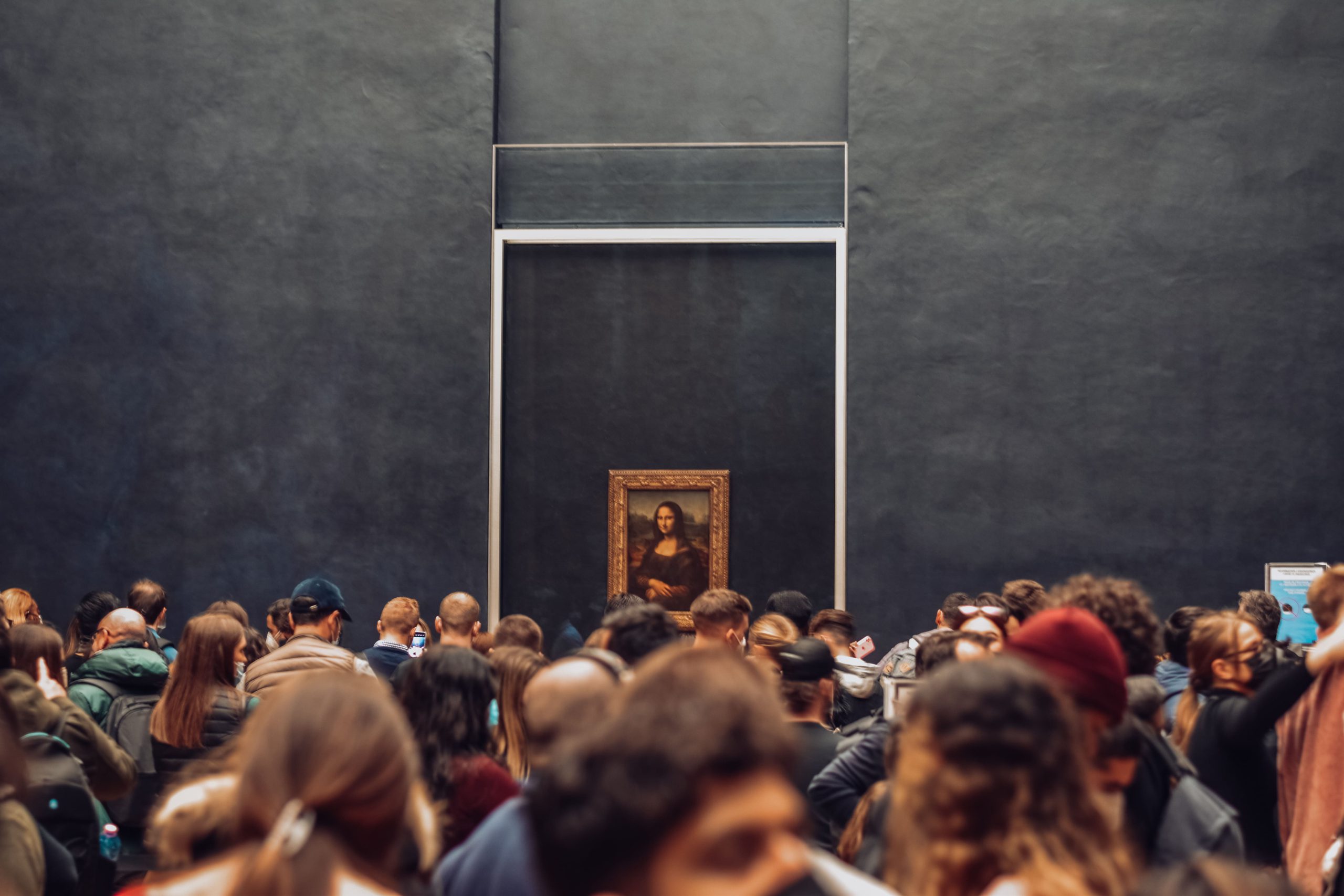Overtourism: a growing challenge for responsible travellers
When responsible travel becomes an issue, deciphering the growing phenomenon of overtourism.
Photo credit: Brittany Chastagnier
Tourism has changed profoundly. And chances are you’ve experienced it.
Have you ever felt suffocated in a tourist attraction? Or have you visited a natural site, but instead of the calm you’d hoped for, it was crowded with thousands of other visitors, present in the same place and at the same time as you?
These scenes have been multiplying in recent years. With sites where groups gather, where people line up to take the same picture. An excessive number of visitors, which is not without consequences for the places visited…
More and more of us are looking to travel more responsibly, by minimizing our impact. We inevitably think about the carbon footprint of our trip, but perhaps less about the impact we leave on the places we visit. But for today’s responsible traveler, it’s impossible to ignore a phenomenon that has been growing steadily over the past decade: overtourism.
The tourism boom: an opportunity or a nuisance?
In just 70 years, tourism has exploded from 25 million tourists in the 1950s to over 1.5 billion today.
Projections anticipate continued growth, with the potential to reach 2.5 billion tourists by 2040…. or almost tomorrow.
But the problem lies in the concentration of these tourist flows on a limited number of destinations. According to the UNWTO (World Tourism Organization), 95% of tourists visit less than 5% of the world’s land mass.
And for some destinations, the influx of tourists is putting them on the verge of suffocation.
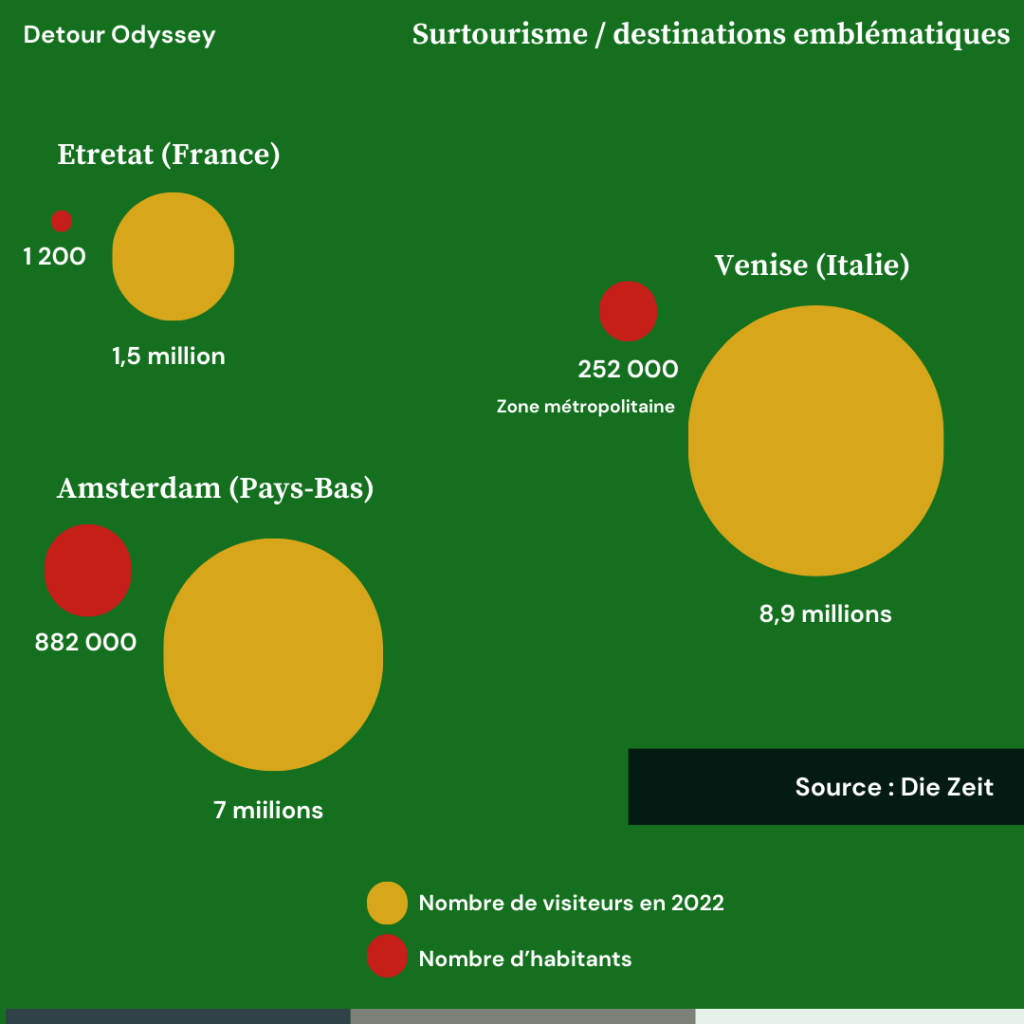
Computer graphics: Detour Odyssey
Venice, for example, is often associated with overtourism. In 2022, almost 9 million tourists visited the City of the Doges, where 250,000 people live in the metropolitan area. Other examples, even in France, are striking: like Etretat, with 1.5 million visitors for just 1,200 inhabitants.
Overcrowding is even forcing some destinations to introduce restrictive measures. Dubrovnik, Barcelona and the Calanques National Park in Marseille are just a few examples where tourism is becoming a threat to heritage and ecosystems….
The impact of excessive tourist numbers
When destinations experience a massive influx of visitors, even if seasonal, there are far-reaching consequences. Transformations are taking place at both environmental and social levels.
Environmental impact: Ecosystems at risk
Massive human concentration inevitably has negative environmental repercussions.
An increase in pollution
Overcrowding in the tourist industry leads to an increase in the flow of people and the use of both air and motorized transport. This leads to an increase in pollution peaks and a deterioration in air quality. New solutions are now emerging to study the effects of tourist traffic on air and soil quality, such as the technology developed by the Murmuration based in Toulouse. And in the light of data analysis, one thing is clear: an over-visited destination will experience strong environmental impacts, particularly in terms of air pollution, soil pollution and water pollution from wastewater discharge.
Destruction of ecosystems and loss of biodiversity
Excessive human presence disrupts ecosystems and threatens biodiversity. Unfortunately, this is a fact. The daily trampling of thousands of people, the noise and the massive influx can destabilize animal species and destroy some of the vegetation…. This can lead to accentuated erosion as in the calanques of Marseille or the cliffs of Etretat or to destruction of entire ecosystems such as the coral reefs in certain regions such as Thailand.
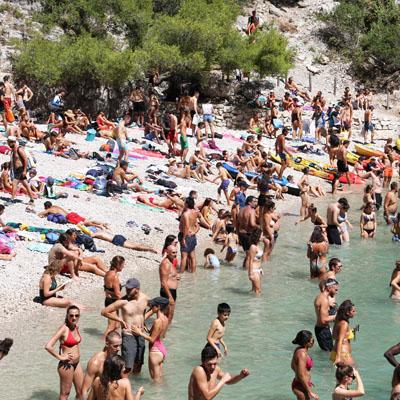
Photo credit: National Park Marseille
Over-consumption and increased waste

Credit infographics : WWF – Rapport Reviving Mediterranean sea economy
Mass tourism also drastically increases the consumption of natural resources and generates a significant amount of waste. With populations increasing exponentially at certain times of the year in these regions, the need for energy, water and food keeps pace.
A WWF report on tourism in the Mediterranean estimates that atourist consumes on average 3 to 4 times more water than a resident.
And this can create real problems when resources are already limited. The second consequence of higher consumption is the production of waste, which unfortunately often ends up in the environment. The same WWF report estimates that 52% of waste in the Mediterranean is directly linked to beach tourism.
According to a study by the Ellen Mac Arthur Foundation it is estimated that by 2050 there will be more plastic in the oceans than…fish. A real threat to wildlife, especially birds and marine mammals.
Social impact: local life disrupted
In recent years, we have become increasingly aware of the social impact of overtourism. The subject gained momentum as local populations began to openly speak out against the massive influx of travelers. They turn their daily lives and quality of life upside down. A phenomenon that the WTO has even identified with the term “tourismophobia”.
Transformations in the city for residents
The presence of tourism changes needs and the commercial ecosystem. Souvenir stores will emerge and multiply, and bars and restaurants will develop to the detriment of local shops. The consequence can be the complete transformation of neighborhoods into “tourist” districts, with souvenir shops that replicate themselves on entire streets, or areas that specialize in nightlife with bars and clubs for purely seasonal activity.
Gentrification of city centers and the housing issue
Overtourism is a destabilizing factor in the housing market. The influx of tourists is generating a major development of the tourism offer with hotels but also short-term furnished accommodation (popularized by players like AirBnB). Housing for local residents becomes scarcer, and property prices rise for the local population.
City centers then become inaccessible to the lower and working classes. These neighborhoods are gentrifying, with the majority of residents coming from affluent classes. As a result, many of the city’s inhabitants are forced to move to the outskirts or to neighboring towns, and the city is emptied of its inhabitants….
Barcelona, for example, is one of the cities where residents have been quite vocal about the negative impacts of overtourism and the difficulties of finding accommodation. In France, certain destinations in Brittany are also becoming particularly problematic.
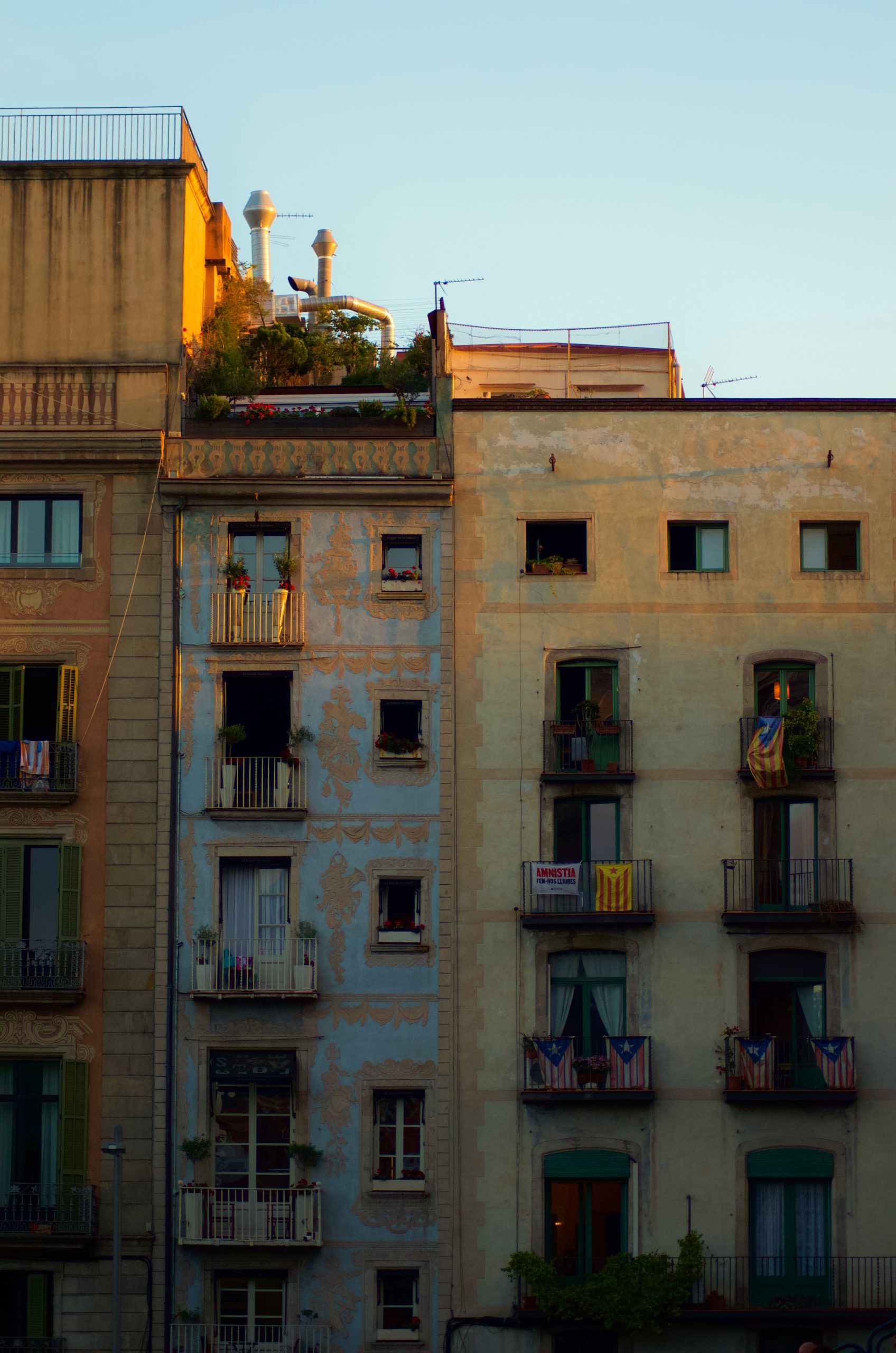
Photo credit: Carlos Vega
As a result, towns lose their soul and sometimes become a kind of “Disneyland”, with city centers mainly dedicated to tourism, to the detriment of their authenticity and local life.
Overtourism: Understanding its causes and taking action for responsible tourism
Overtourism, a phenomenon that has been expanding rapidly over the past decade, has its roots in a number of factors that have amplified its emergence and growth in many destinations.
Democratization and accessibility
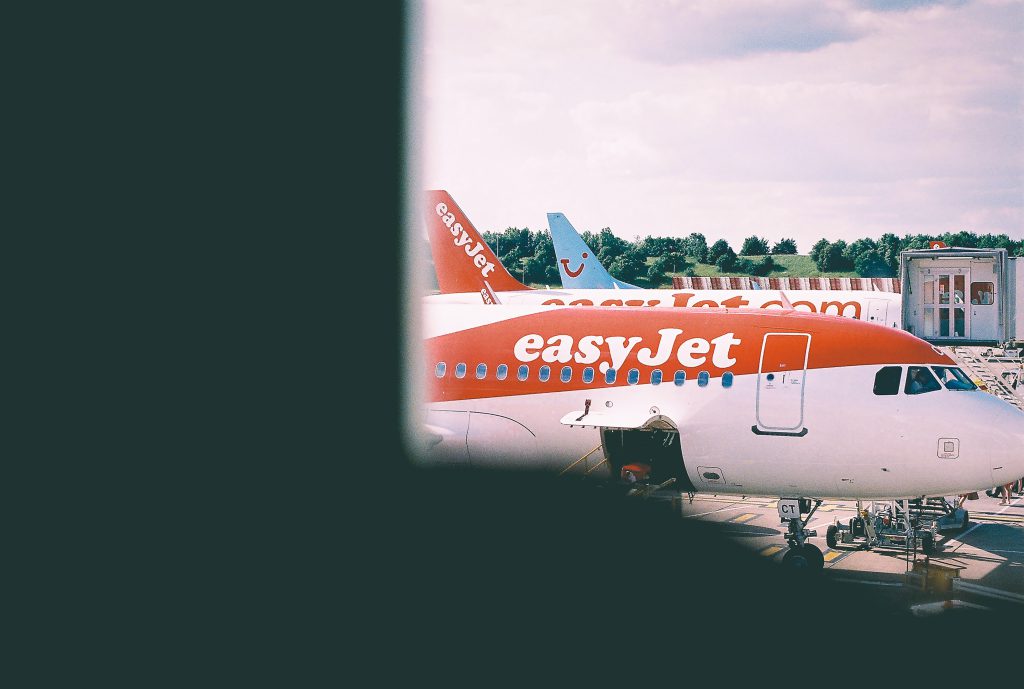
Photo credit: Elio Santos
One of the main driving forces behind this wave of tourism is the democratization of travel.
Transport infrastructures have developed and are more affordable than they were 50 years ago. The emergence of low-cost airlines in the 1990s revolutionized the sector. These companies have enabled new populations to travel further and more often. Cruises have followed the same trend, with players offering “all-inclusive” packages at attractive rates to target a new traveler profile.
The influence of social networks and the media
The rise of social networks, especially Instragram has amplified the phenomenon. These platforms have become spaces for sharing vacations and stunning shots, which have created a norm. At the same time, travel influencers and specialized media have turned certain destinations into “Instagrammable spots” with superb shots that magnify the place. Thousands of people are falling under the spell and want only one thing…..visit this destination and, for many, even reproduce these iconic photos.

Photo credit: Bastian Riccardi
In addition to social networks, theentertainment industry and the media also help to raise a destination’s profile. Think of Game of Thrones, which popularized Dubrovnik, where the series was filmed, has seen a massive increase in the number of tourists visiting the Croatian city…. to the point where it came within a hair’s breadth of being added to UNESCO’s list of sites at risk.
Economic pressure: the impact of the tourism industry
Tourism, as an economic driver, is generally a godsend. It stimulates economic activity, creates jobs and generates income for local communities. And in some places, it can become an important, even critical, part of the local economy. But when tourism turns to overtourism, the initial benefits give way to negative environmental and social consequences. The challenge lies in striking a delicate balance between the impact of the situation and maintaining the economic engine for many residents.
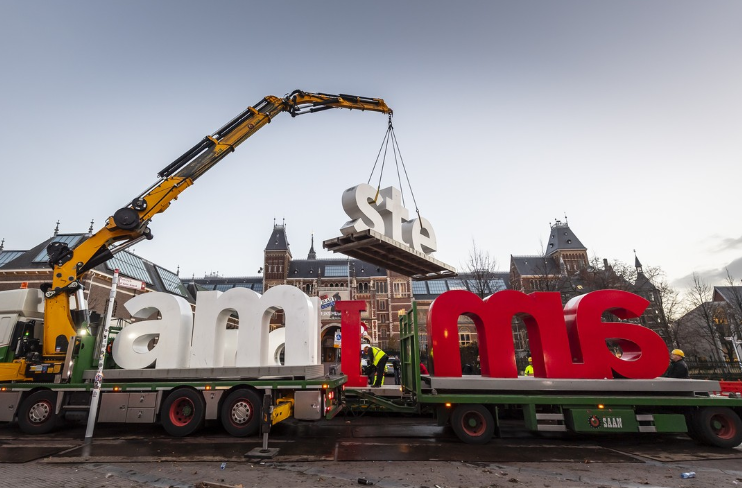
Photo credit: @seeityourselfnl
First, destinations are in favor of being promoted by travel agencies or low-cost airlines. This is because these players strongly influence travelers’ choices through the travel products they offer. But when a place is affected by overtourism, preserving the place takes precedence over promoting it.
In such cases, local authorities can adopt restrictive measures, such as quotas for certain sites in Barcelona, entry fees in Venice, bans on cruise ships in Amsterdam, and sometimes even deploy “marketing” campaigns to dissuade visitors. Marseille’s Calanques National Park, for example, has made this choice by clearly explaining to travelers what their experience will be like. Terms like “surviving the Calanques” set the tone for summer visitors to the Calanques….
Travelling in a different way, with an awareness of its impact, means considering a low-carbon journey that also respects the places we visit. So that our presence is not a source of degradation or destruction. At Detour Odyssey, we encourage peaceful, low-carbon travel….for a travel experience that respects the planet and the destinations we visit.
Don’t hesitate to contact us to find out more about our low-carbon and responsible travels.

